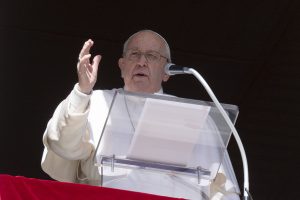SCRANTON – On the weekend when the war between Ukraine and Russia reached its two-year mark, more than 100 people came together in prayer at the Cathedral of Saint Peter.
The Most Rev. Joseph C. Bambera, Bishop of Scranton, and Father Myron Myronyuk, Pastor, Saint Vladimir Ukrainian Catholic Church of Scranton, held a special Prayer Service for Peace on Feb. 25, 2024.
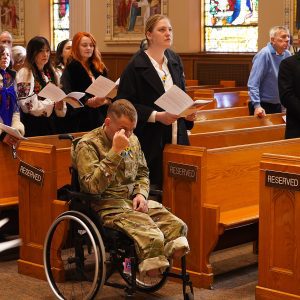
“We pray today for our brothers and sisters and all who are burdened by such unjust aggression,” Bishop Bambera said in welcoming those in attendance. “We ask God’s mercy and peace, God’s presence and an end to war.”
Sitting in a wheelchair near the front of the Cathedral, Serhii Railian knows first-hand the atrocities of war. He was severely injured while fighting in Ukraine and is now receiving rehabilitation in the Philadelphia-area.
With the help of a translator, Railian expressed gratitude for the crowd that attended the prayer service.
“He said he’s very grateful for the people of this community for remembrance and bringing this issue up because it helps the boys and girls on the frontlines, knowing all the support from America,” the soldier said.
Father Myronyuk said in addition to Railian, there was also a second injured Ukrainian soldier in attendance at the Cathedral.
“They are happy to be here, and they feel the support. Events like this show we’re not alone,” Father Myronyuk said.
On the same day as the prayer service, Ukrainian president Volodymyr Zelenskyy told reporters at least 31,000 Ukrainian troops have been killed since Russia’s invasion of Ukraine began. It is the first time Ukraine has given a number for its military casualties, and Zelenskyy declined to say how many soldiers are wounded or missing.
“If Russia succeeds in this war, the prospects of a wider war grow exponentially and with it, the security of the entire world falls into peril,” Rev. John Seniw, a longtime pastor in Berwick whose mother was born in Ukraine, said during the homily of the prayer service.
“Let us continue to pray that God would heal the wounded, console those who mourn, sustain the soldiers and comfort all who suffer from this war,” he added.
Deborah Pusateri, a parishioner of Saint Vladimir’s Church, attended the prayer service. Her grandparents lived in Ukraine but came to the United States several decades ago.
“It was important to come out and pray,” she said. “It is just terrible that such a peaceful country is being destroyed.”
As the prayer service concluded, Bishop Bambera urged those in attendance to continue to pray for the people of Ukraine.
“While at times the world seems to forget the horrors of war and, at times, we become numb to news reports that over and over again speak of atrocities beyond belief, may our prayers never lose their intensity and may we continue to pray that God’s gift of peace would reign throughout this world and most especially this day – and someday soon – throughout Ukraine,” Bishop Bambera said.

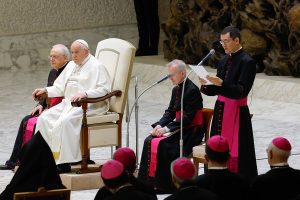
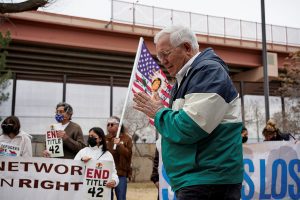


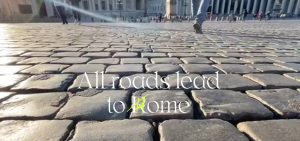
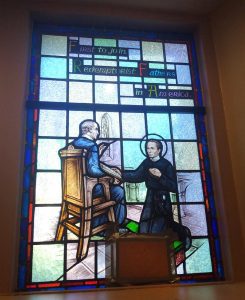
 On February 13, the U.S. House of Representatives overwhelmingly voted to pass the Frederick Douglass Trafficking Victims Prevention and Protection Reauthorization Act of 2023 (H.R. 5856). This bipartisan measure would do several things to combat the scourge of human trafficking, including:
On February 13, the U.S. House of Representatives overwhelmingly voted to pass the Frederick Douglass Trafficking Victims Prevention and Protection Reauthorization Act of 2023 (H.R. 5856). This bipartisan measure would do several things to combat the scourge of human trafficking, including: 